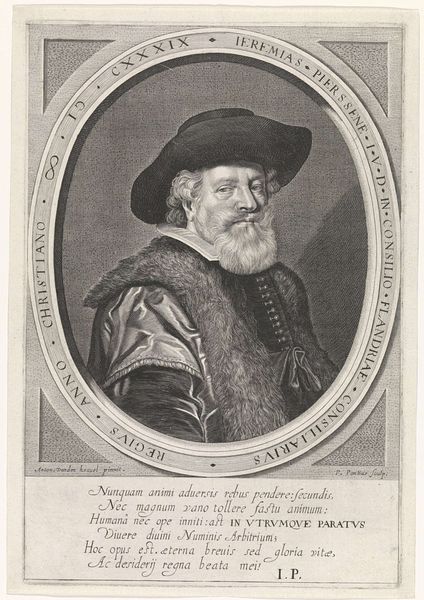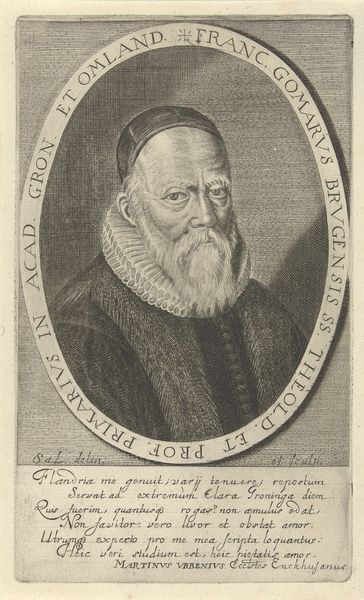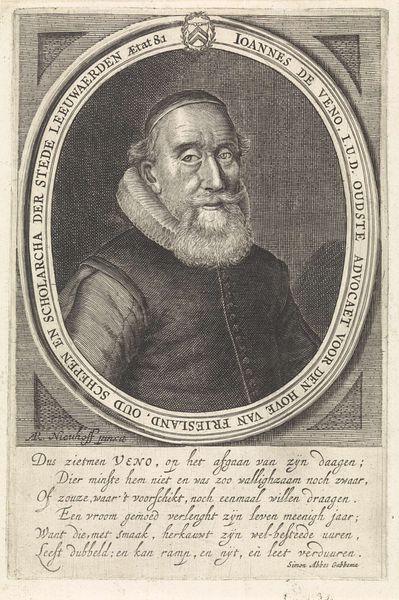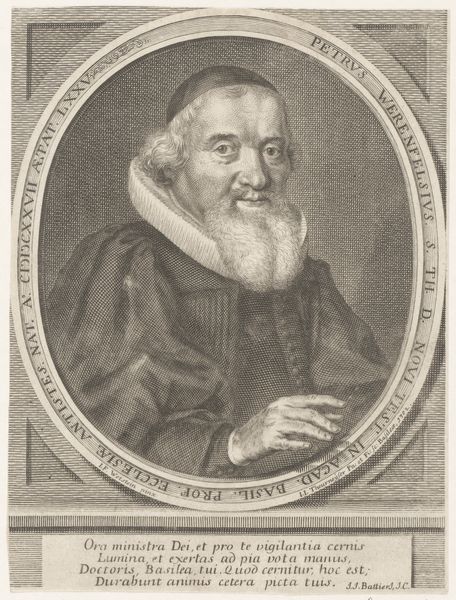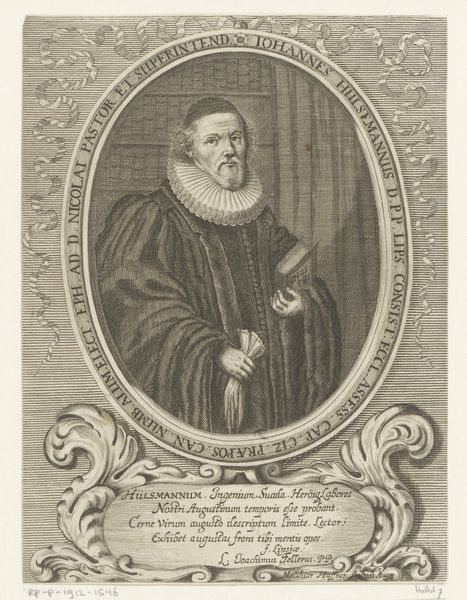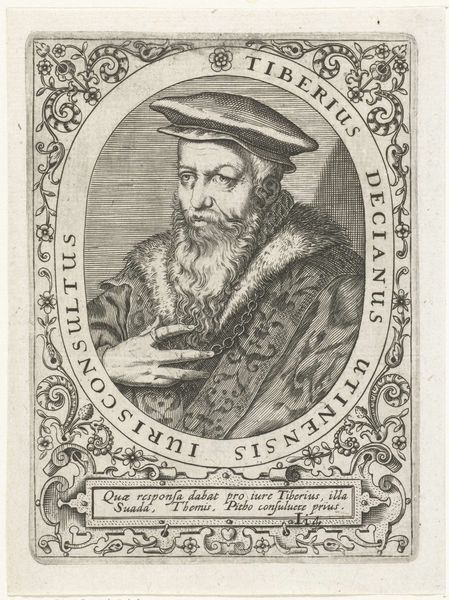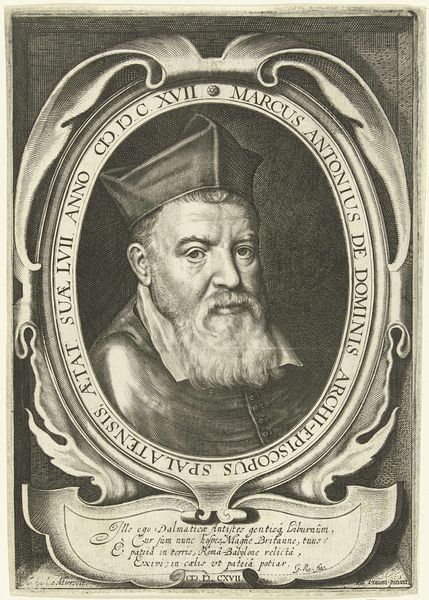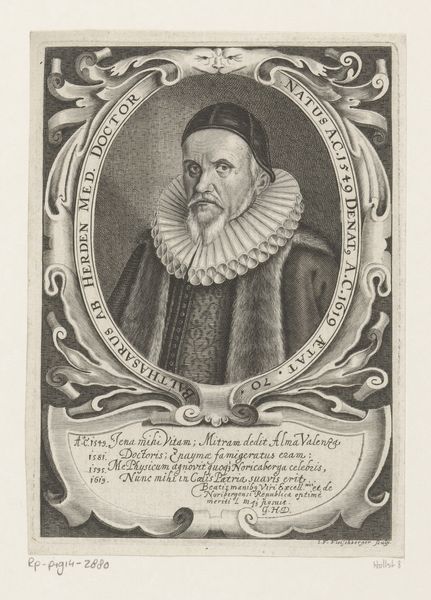
print, engraving
#
portrait
#
baroque
# print
#
old engraving style
#
pencil drawing
#
history-painting
#
engraving
Dimensions: height 161 mm, width 113 mm
Copyright: Rijks Museum: Open Domain
Curator: Here we have a print from 1625 by Crispijn van de Passe the Younger titled "Portret van Henricus Caesarius," currently housed at the Rijksmuseum. Editor: My initial thought? This piece exudes a solemn sort of wisdom. The detail in the engraving—it feels like every line tells a story. Curator: Indeed. Van de Passe was renowned for his skill as an engraver and printmaker. In this portrait, the subject, Henricus Caesarius, is framed within an oval border. Notice the text surrounding him; it identifies him as a pastor of the Utrecht church. The inclusion of text emphasizes the subject's social role, embedding the portrait within a framework of civic and religious identity. Editor: That ruff! And the subtle variations in line weight that give texture to his beard… there’s almost a sense of restless energy in the man’s still gaze. But why choose engraving? I mean, the level of detail seems achievable through drawing alone. Curator: Engraving allowed for wider distribution. This wasn’t just a personal memento, but a public image, circulating within a specific social and intellectual milieu. Prints played a crucial role in disseminating knowledge and constructing public figures in the early modern period. Editor: So, it was a kind of early social media? The Baroque era was fascinating in the way they combined dramatic emotion with stringent messaging. In this case, it feels tailored to reinforce the values of intellect and devotion to religion. The Latin inscription further elevates it to that audience, a language understood by the educated class. Curator: Precisely! It reflects the importance of religious leaders within their communities and acts as a testament to their contributions. The print serves not just as a record of appearance but as an assertion of status and authority. Editor: Thinking about it, even now, this man emanates this deep feeling of confidence. Perhaps that was one intention of these types of portraits? Well, it certainly served its purpose if that was the case. Curator: Absolutely. And by analyzing how prints like this circulated, we gain insight into the dynamics of power and reputation in 17th-century society.
Comments
No comments
Be the first to comment and join the conversation on the ultimate creative platform.




